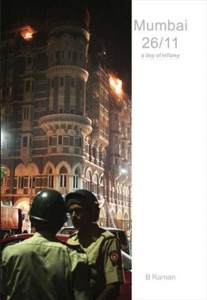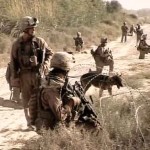The sporadic successes of the Predator strikes alone will not be able to effectively destroy the terrorist infrastructure of Al Qaeda and the Taliban in Pakistani territory. To be effective, land-based strikes would also be necessary.
No terrorist organization in Pakistan can exist without State complicity if not sponsorship, sanctuaries and funds. Not only Al Qaeda and the Taliban, but also the largely Punjabi terrorist organizations of Pakistan operating against India in Indian territory enjoy these three essential elements of survival in Pakistan. A ground reality not realized in Washington DC is that all the jihadi terrorist organizations based in Pakistan make available to each other the use of their hide-outs, sanctuaries and training centres. One recently saw the instance of Rashid Rauf of the JeM being killed in a Predator strike on an Al Qaeda hide-out. There have been reports in the Pakistan media of two Punjabi terrorists belonging to what they have described as the Punjabi Taliban being killed in a Predator attack on an Al Qaeda vehicle in South Waziristan on January 1, 2009. The Predator strike targeted and killed Osama al-Kini alias Fahid Mohammad Ally Masalam, described as responsible for Al Qaeda operations in Pakistan, including the bombing of the Marriott Hotel in Islamabad on September 21, 2008, and his No. 2 Sheik Ahmed Salim Swedan. Both were Kenyan nationals. In addition to the two of them, the Predator strike also reportedly killed two members of the JeM, who were also in the same vehicle. One would recall that in March, 2002, Abu Zubaidah, the Palestinian member of Al Qaeda, was caught in a hide-out of the Lashkar-e-Toiba (LeT) in Faislabad in Pakistani Punjab.
From such instances, it should be clear that one cannot make a distinction between sanctuaries of Al Qaeda, those of the Taliban and those of the anti-India organizations. All sanctuaries have to be attacked and destroyed irrespective of to which organization they belonged. The Bush Administration was not prepared to follow such a clear-cut policy and tried to make an operational distinction between anti-US terrorism and anti-Indian terrorism. Pakistan fully exploited this ambivalence.
 From the various statements of Obama and his advisers, there is not much reason for India to hope that this ambivalence would disappear under him. The double standards vis-a-vis anti-US and anti-India terrorism, which have been the defining characteristics of US counter-terrorism policies since 1981, will continue to come to the rescue of Pakistan. It would be futile for India to expect any major change under Obama.
From the various statements of Obama and his advisers, there is not much reason for India to hope that this ambivalence would disappear under him. The double standards vis-a-vis anti-US and anti-India terrorism, which have been the defining characteristics of US counter-terrorism policies since 1981, will continue to come to the rescue of Pakistan. It would be futile for India to expect any major change under Obama.
President Barack Obama’s new comprehensive Af–Pak strategy unveiled on March 27, 2009, to deal with a mix of cancerous problems might impress and enthuse the new Internet generation with which Obama feels comfortable, but not Indian professionals in terrorism with their feet firmly on the ground in this region. These problems arise from the continuing old Islamic insurgency of the 1980s vintage in Afghanistan, the new post-Lal Masjid raid Islamic insurgency in Pakistan, the continuing jihadi terrorism with many faces — anti-West, anti-Indian, anti-Afghan, anti-Israeli, anti-Russian, anti-Chinese, anti-infidels and anti-apostates — from sanctuaries and breeding grounds in Pakistan and the continuing spread of radical ideas justifying the use of terrorism from the madrasas of Pakistan.
Obama and his advisers suffer from the same prescriptive deficiency as their predecessors. This deficiency arises from their tendency to mix facts with illusions. The facts were as clear to Bush and his advisers as they are now to Obama and his advisers. These are the existence in the Pakistani territory of the sanctuaries of Al Qaeda, the Pashtun Taliban and the Punjabi Taliban organizations with the Lashkar-e-Toiba (LeT) and the Jaish-e-Mohammad (JeM) in the forefront and the role of the Pakistan Army and its ISI in nursing them to serve what they perceive as Pakistan’s strategic interests.
Obamas strategy “” like the one of his predecessor “” is marked by a fear of punishing Pakistan if it does not change its policy of using terrorists to advance its own strategic agenda.
The prescriptive part of Obama’s strategy is as full of illusions as the strategy of Bush was. There is a common root cause for the illusions of the two Administrations. The root cause is their inability to understand that the Pakistani military-intelligence establishment has convinced itself that Pakistan, which had lost its strategic relevance in the immediate aftermath of the end of the cold war, has acquired a new strategic importance. This is thanks to the terrorists of various hues operating from its territory and its nuclear arsenal. The continued existence of these terrorists is in its interest. Action against terrorism when unavoidable, support for terrorism when possible. That is its policy. It has been using its nuclear arsenal not only in an attempt to intimidate India and deter it from retaliating for terrorist strikes in Indian territory, but also to deter the US and the rest of the West from exercising too much pressure on it to deal with the terrorist sanctuaries in its territory.
Unless the mind of the Pakistani military and intelligence officers is disabused of this belief and they are made to co-operate with the international community in destroying the terrorist infrastructure in its territory, no strategy is going to work in ending jihadi terrorism bred in Pakistan. The major deficiency in the prescriptive analysis of Obama arises from his naive assumption that Pakistan can be made to co-operate more effectively against terrorism through a basket of incentives — more military and economic assistance, more training, an emphasis on the continuing importance of Pakistan even after the war on terrorism is over, etc.




